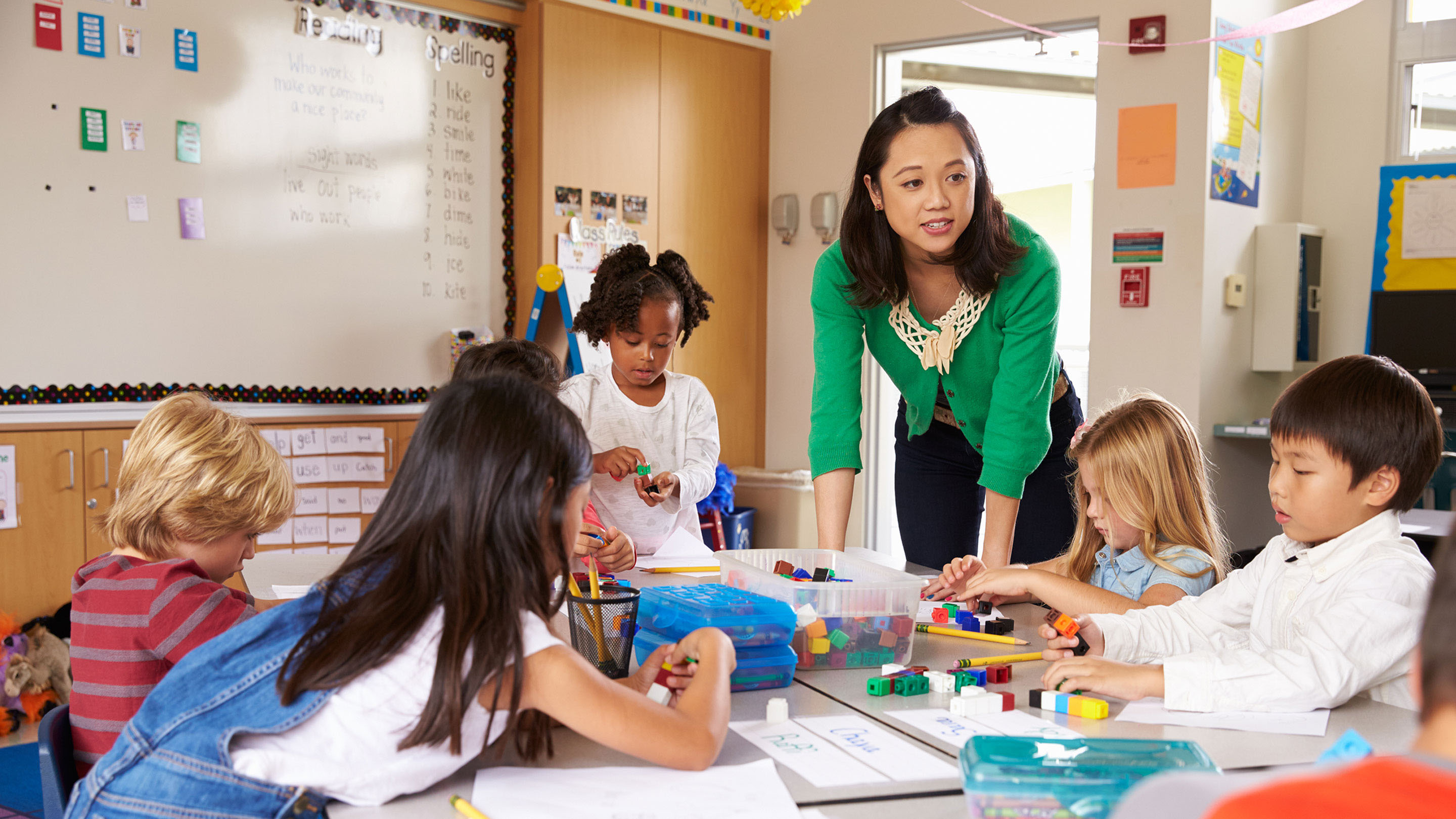Enroll in Primary Science Tuition Singapore for a Strong Science Foundation
Enroll in Primary Science Tuition Singapore for a Strong Science Foundation
Blog Article
A Comprehensive Guide to the Numerous Discovering Techniques in Key Science Direction
The expedition of varied discovering techniques in primary scientific research instruction presents a possibility for teachers to improve trainee engagement and comprehension significantly. By examining hands-on understanding strategies, inquiry-based approaches, and collaborative approaches, we can identify efficient techniques that cater to numerous discovering styles.

Hands-On Learning Techniques
Hands-on understanding strategies play a crucial function in key science instruction, engaging pupils in energetic exploration and experimentation. These techniques permit students to engage directly with phenomena and materials, cultivating a much deeper understanding of scientific principles. By utilizing manipulatives, designs, and real-life experiments, teachers produce an environment where trainees can observe, hypothesize, and evaluate their concepts.
Such techniques not only boost comprehension however likewise grow important thinking and problem-solving abilities. When pupils join activities like building easy machines, growing seeds, or performing chain reactions, they are encouraged to ask inquiries and look for responses with their very own observations. This experiential strategy assists to demystify intricate clinical principles, making them a lot more accessible and relatable.
In addition, hands-on discovering promotes collaboration among peers, as pupils commonly function in teams to conduct experiments or share searchings for. This team effort not just improves their understanding experience yet additionally establishes essential social skills. Ultimately, incorporating hands-on methods in primary scientific research direction fosters a lifelong love of knowing and curiosity regarding the environment, laying a solid structure for future academic pursuits in scientific research and beyond.
Inquiry-Based Understanding
Inquiry-based understanding is an instructional approach that urges pupils to ask concerns, check out sensations, and build their very own understanding of clinical principles. This technique changes the emphasis from traditional teacher-led guideline to a much more student-centered experience, where students take the initiative in their academic trip. By fostering interest, inquiry-based learning advertises deeper engagement with the material, allowing pupils to explore subjects in a significant context.
In technique, this method commonly entails hands-on experiments, observations, and important reasoning tasks that align closely with the clinical method. Trainees are urged to develop hypotheses, layout examinations, and analyze data, which cultivates vital skills such as problem-solving and logical reasoning. The function of the teacher in this structure is to promote exploration, guiding pupils through the inquiry procedure while encouraging independent thought and partnership.
Furthermore, inquiry-based discovering supports a feeling of possession over the understanding process, encouraging trainees to pursue understanding proactively. This approach not only enhances understanding of scientific concepts yet also cultivates a lifelong love for understanding, equipping trainees with the skills necessary to navigate a significantly complicated globe.
Collaborative Knowing Approaches
Collective understanding methods equip trainees to participate in significant communications with peers, cultivating a common responsibility for their academic results. In main science guideline, these techniques encourage students to work together to explore scientific ideas, fix problems, and carry out experiments (primary science tuition Singapore). By taking part in group activities, pupils can leverage varied point of views, enabling richer understanding and retention of clinical expertise
One trick facet of joint knowing is the focus on communication abilities. Pupils have to articulate their ideas, listen actively to others, and work out ideas, every one of which are vital competencies in both scholastic and real-world contexts. This social communication not only enhances their understanding of scientific concepts however also advertises synergy and dispute resolution abilities.
Moreover, joint discovering frequently brings about boosted inspiration and involvement. They are a lot more most likely to take ownership of their understanding trip when students see the worth of their contributions within a team. Educators can promote this procedure deliberately organized group tasks that straighten with curriculum goals while offering advice on efficient collaboration techniques. On the whole, integrating joint understanding approaches in main scientific research guideline cultivates a vibrant learning atmosphere that prepares trainees for future scholastic and social challenges.
Innovation Assimilation in Scientific Research
The combination of modern technology in main scientific research guideline enhances finding out experiences by giving cutting-edge tools and resources that sustain numerous training methodologies, including collaborative understanding - primary science tuition Singapore. Using digital platforms, simulations, and interactive applications allows students to involve deeply with scientific principles, promoting an extra hands-on strategy to learning
Virtual research laboratories, for instance, make it possible for students to conduct experiments securely and efficiently, advertising inquiry-based discovering. These devices can mimic real-world clinical scenarios, allowing pupils to visualize complicated processes that would certainly be hard to replicate in a traditional classroom setting. Modern technology fosters interaction and partnership amongst trainees, as they can share searchings for and function together on jobs via on the internet systems.
Furthermore, multimedia presentations and academic videos can improve lessons by dealing with varied discovering designs, making abstract ideas extra easily accessible. Information evaluation devices also encourage pupils to accumulate and translate clinical information, enhancing crucial assuming abilities. Generally, the calculated unification of technology in key scientific research direction not only enhances engagement but additionally prepares students for a highly innovative culture, outfitting them with essential abilities for future scientific ventures.
Differentiated Guideline Techniques
Distinguished guideline techniques are important for resolving the diverse needs of learners in key science education and learning. These methods make it possible for instructors to tailor their mentor approaches to fit differing abilities, passions, and learning styles within the classroom. By employing set apart direction, teachers can develop a comprehensive environment that promotes interaction and boosts understanding of scientific principles.
One reliable technique is to make use of versatile grouping, which enables students to team up with peers at comparable ability levels or with differing viewpoints. This method motivates peer knowing and promotes important thinking. Furthermore, supplying choices in tasks can equip pupils, page permitting them to choose jobs that reverberate with their rate of interests while still meeting curricular purposes.
Moreover, integrating tiered tasks is one more important method. Deliberately jobs with additional hints varying degrees of intricacy, teachers can make sure that all students are suitably challenged, regardless of their proficiency. Making use of formative analyses to evaluate understanding more allows teachers to change their educational approaches dynamically, making certain that each student obtains the assistance they need.
Eventually, applying separated guideline methods in primary science education and learning not only improves student discovering results however additionally grows a passion for scientific research, preparing students for future scholastic searches.

Conclusion
In summary, reliable primary scientific research instruction requires a multifaceted method that includes hands-on learning, inquiry-based techniques, and collective methods. The integration of technology and separated guideline additionally accommodates diverse understanding designs, fostering an environment conducive to exploration and important reasoning. By implementing these strategies, teachers can improve student engagement and comprehension, inevitably nurturing a lifelong enthusiasm for science and query. Such extensive approaches are vital for developing notified and curious future researchers.
The exploration of diverse learning techniques in main scientific research guideline provides an opportunity for educators to boost student engagement and comprehension significantly.Hands-on understanding methods play a critical role in primary scientific research instruction, involving trainees in active exploration and experimentation.Inquiry-based knowing is an instructional method that urges pupils to ask concerns, explore sensations, and build their very own understanding of clinical concepts.Collaborative knowing techniques encourage students to involve in meaningful interactions with click resources peers, cultivating a shared responsibility for their academic results. In general, incorporating joint understanding approaches in main scientific research guideline cultivates a dynamic discovering environment that prepares trainees for future academic and social difficulties.
Report this page